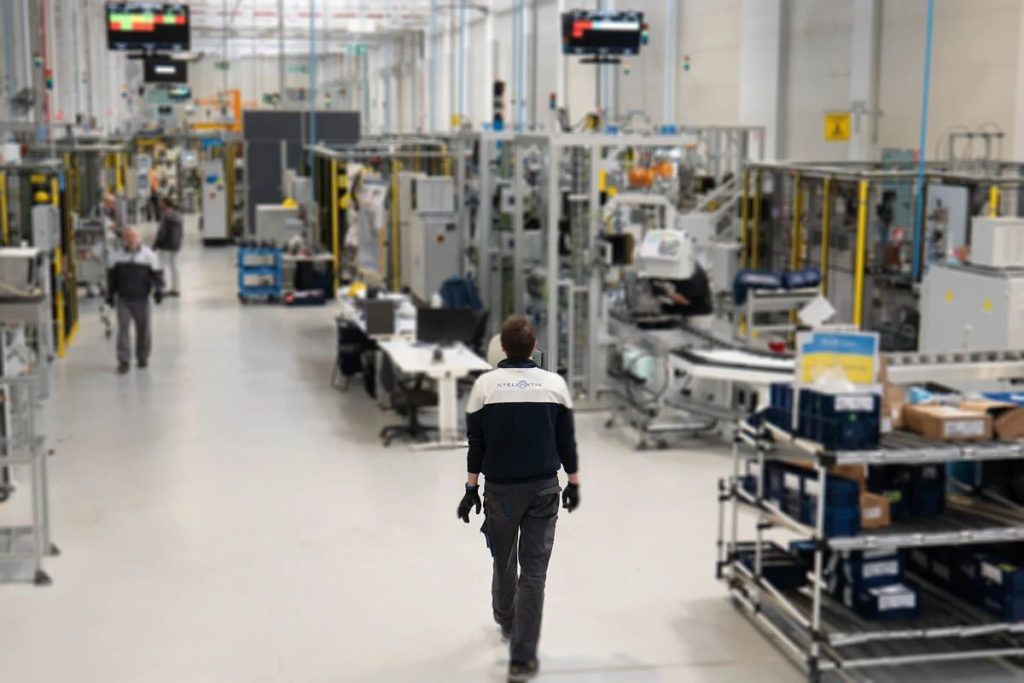
The Group Stellantis has announced that its Termoli plant in Italy will produce the eDCT electrified transmission from 2026. This decision, made official in a press release on February 17, 2025, raises many questions about the future of the ACC gigafactory, originally planned for battery production at the same plant.
Boosting production of eDCT transmissions in Europe
Stellantis currently manufactures its eDCT transmissions at two sites:
- Metz (France) 300,000 units per year
- Mirafiori (Italy) 300,000 units per year
These two plants already total 600 000 eDCT transmissions produced annually, for the Group's Mild Hybrid (MHEV) and Plug-in Hybrid (PHEV) vehicles. eDCT transmissions are distinguished by their integration of a 21 kW electric motor within a dual-clutch gearbox, enabling the combustion engine to remain switched off for 50 % of the time in the urban cycle, while reducing weight, fuel consumption and pollutant emissions.
According to the official press release, Stellantis plans to add production of 300,000 eDCTs a year at its Termoli plant (Italy). The stated aim is to achieve 900,000 eDCT transmissions per year in Europe.
This increase in output is accompanied by investments also dedicated to gearbox components. The Sint Truiden (Belgium) and Metz (France) plants will increase production of the key components required for this new production capacity. Metz, the first plant to start production of hybrid transmissions, will even see the installation of a new assembly line. These announcements are in line with the takeover of e-transmissions by Stellantis a few weeks ago.
Why Termoli opts for eDCT transmission
By focusing on increased production of eDCT boxes, Stellantis confirms its commitment to renew and expand its range of hybrid vehicles. The Group anticipates significant growth in demand for its electrified models (MHEV and PHEV). To meet this demand, the company already has factories in place and is stepping up production in its three European hubs.
Until now, the Termoli plant was dedicated to the production of production of FireFly (GSE), GME and V6 engines. Eventually, this historic site was to be converted into a battery gigafactory, as part of the ACC (Automotive Cells Company) joint venture. This project, announced with great fanfare, has been suspended in 2024, prompting speculation about its future.
Termoli ACC gigafactory shelved?
The Gigafactory project, which was to ensure the group's autonomy in terms of batteries for electric vehicles, has been frozen in 2024. Stellantis had nevertheless promised to report back to the in the first half of 2025. Since then, however, a number of statements have cast doubt on a possible relaunch.
One of the most striking statements came from CEO of Total, also involved in the ACC joint venture. The latter recently declared:
"It's better to concentrate efforts on one plant rather than three."
In other words, the consolidation of the project around a single battery plant instead of three could mean that Termoli would not become the gigafactory initially announced.
Between the suspension of the project in 2024, the doubts expressed by Total, and today's announcement of the production of eDCT transmissions in this very plant, There's every reason to believe that Termoli will focus on continuing to produce motors (FireFly, GME, V6) and eDCT boxes, rather than converting to battery production.
Nevertheless, this decision reassures us about the site's industrial future and the jobs linked to the production of internal combustion and hybrid powertrains, at a time when the European market is still a long way from switching to 100 % electric vehicles.

Why giga factory? All car factories are always very large.
is the nickname given to battery factories, they call it a Gigafatory.
We need to be aware that the European automotive industry is struggling to produce the entire electric vehicle value chain (batteries and motors in particular) in terms of both quality and quantity, despite optimistic media rhetoric.
All European players are faced with these difficulties, which also explains the weakness of the electric market at European level: this weakness stems from both the market and the manufacturers, who are unable to mass-produce EVs...
It's an open secret that the technology gap between European and Chinese players is (too) wide, especially for battery manufacturers, who are investing massive sums in R&D and increasing their lead in this field. The difficulties experienced by ACC, Northvolt and others are a case in point, and European manufacturers will be forced to source their batteries from the Chinese on a long-term basis, which will limit European 100% battery solutions and de facto industrial investment...
This is less true of engines, where European electric models are generally more efficient and always more advanced than their Chinese rivals.
The current shift towards electrified internal combustion engine production also shows that the 100% electric party is over: the "Green Deal" has turned into a "Green Down", and the reason is to offer a plurality of technologies until 2035: hybrid internal combustion, plug-in hybrid internal combustion and not exclusively full electric, as some had boasted.